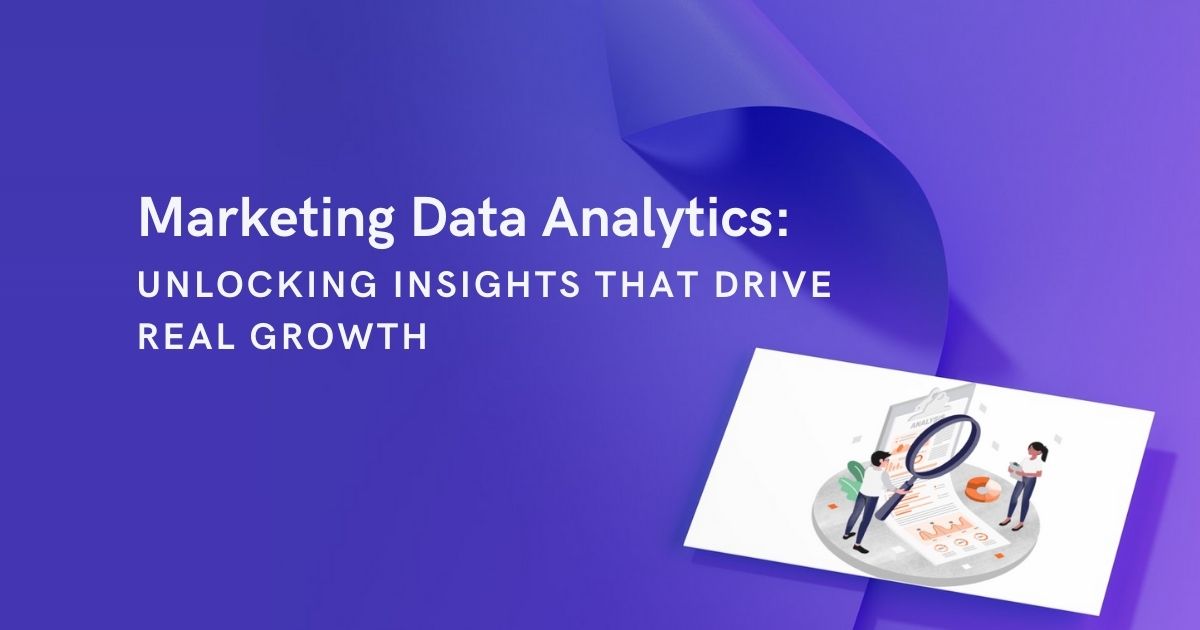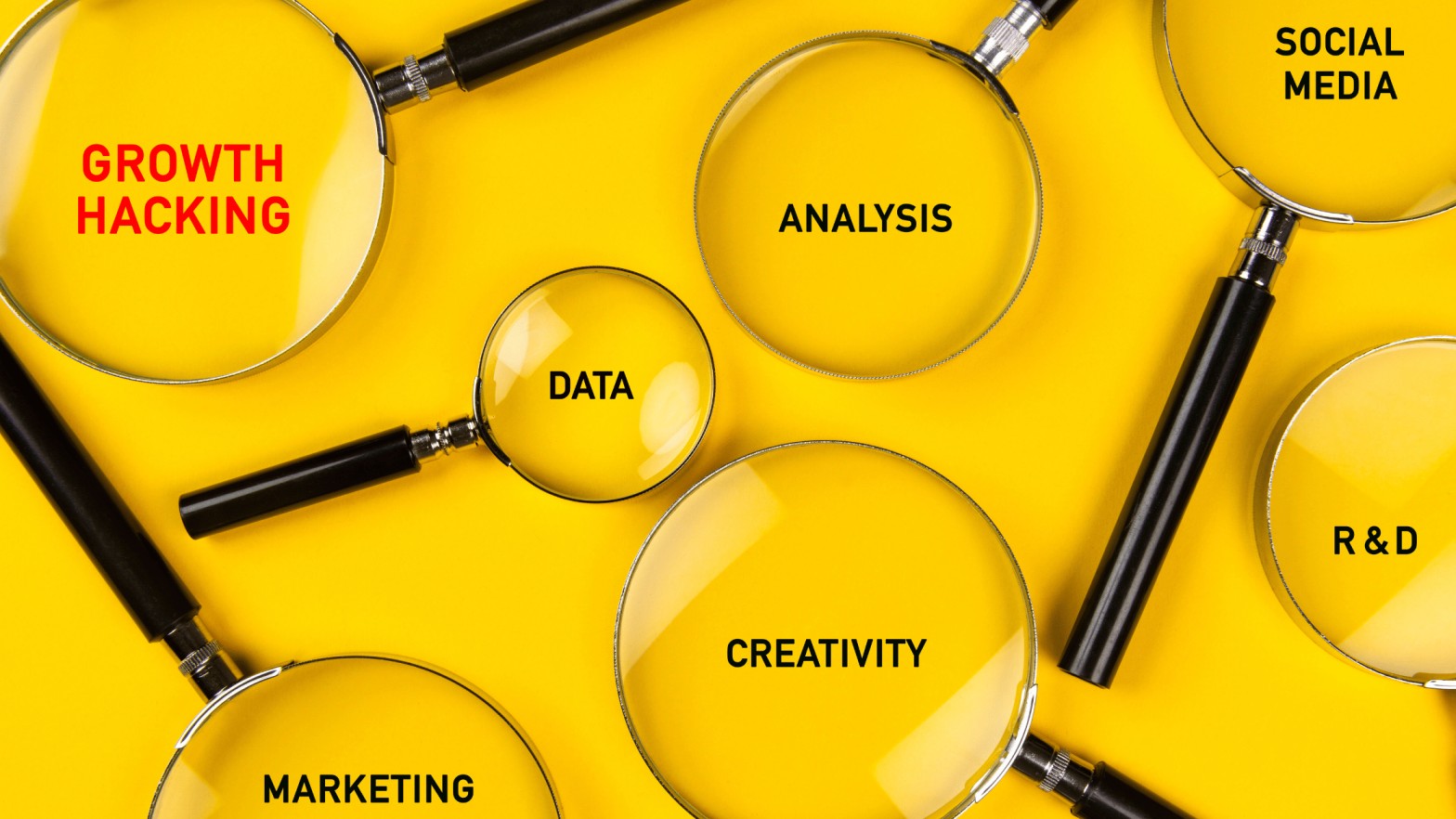Marketing Data Analytics: Unlocking Insights That Drive Real Growth

Strong 8k brings an ultra-HD IPTV experience to your living room and your pocket.
Marketing Data Analytics is the practice of measuring, managing, and analyzing marketing performance to maximize its effectiveness and optimize return on investment (ROI). Think of it as the compass guiding marketers through oceans of data to land on strategic islands of insight.
By tracking everything from website visits and email clicks to customer lifetime value, analytics gives marketers the power to understand what's working and what’s not—so they can do more of what drives results.
Why Marketing Data Analytics Matters More Than Ever
In today’s digital-first world, businesses are swimming in data. But raw data without direction is just noise. That’s where marketing analytics comes in—it filters the noise and tunes into the patterns that matter.
Companies using marketing data analytics:
- Make smarter budget decisions
- Improve targeting and personalization
- Enhance customer experiences
- Gain competitive edge
In short, it’s the difference between guessing and knowing.
Core Components of Marketing Data Analytics
1. Data Collection
This is where it all begins. You collect data from multiple sources:
- Website traffic (via Google Analytics, heatmaps)
- Social media insights
- CRM systems
- Email marketing tools
- Customer feedback platforms
2. Data Integration
After gathering data from different platforms, the next step is unifying it. Think of this as putting puzzle pieces together to see the full picture.
3. Data Cleaning and Transformation
Raw data can be messy. Analytics involves cleaning (removing duplicates, fixing errors) and transforming it into usable formats. It’s like turning rough diamonds into polished gems.
4. Analysis and Interpretation
Once clean and ready, the data is analyzed using tools like:
- Google Looker Studio
- Tableau
- Power BI
- SQL-based tools
You’ll dig into KPIs like:
- Customer acquisition cost (CAC)
- Conversion rates
- Return on Ad Spend (ROAS)
- Customer Lifetime Value (CLV)
5. Actionable Insights
The magic happens when you turn insights into action. Data should inform campaigns, budget shifts, and future strategies.
How Marketing Analytics Transforms Strategy
Improved Campaign Performance
By analyzing past campaigns, you can replicate success and avoid repeating failures. For example, if Facebook ads outperform email campaigns, you know where to double down.
Audience Segmentation
Analytics helps identify who your best customers are. You can segment by demographics, behavior, purchase history, or engagement levels—then tailor your messages accordingly.
Predictive Analytics
Ever wish you could predict customer behavior? With machine learning, analytics platforms can do just that. Predictive models can estimate:
- Future churn rates
- Likelihood to purchase
- Next best product to recommend
Real-time Optimization
With real-time dashboards, you don’t have to wait until the end of the month to know what’s happening. You can tweak campaigns on the fly for better outcomes.
Marketing Analytics Tools You Should Know
There’s no shortage of tools out there, but here are a few favorites:
Google Analytics 4: Tracks user behavior and website performance
HubSpot: Offers robust marketing and CRM analytics
Looker Studio: Great for creating visual dashboards
SEMrush / Ahrefs: SEO and keyword data goldmines
Hotjar: User behavior visualization through heatmaps and recordings
Metrics That Matter Most in Marketing Analytics
Traffic Metrics
- Pageviews
- Unique Visitors
- Bounce Rate
- Time on Site
Engagement Metrics
- Click-through rate (CTR)
- Social shares and likes
- Comments and interactions
Conversion Metrics
- Lead Conversion Rate
- Sales Conversion Rate
- Cost per Lead (CPL)
Revenue Metrics
- ROAS
- Marketing-attributed revenue
- CLV vs CAC Ratio
Common Challenges in Marketing Data Analytics
Even with the best tools, analytics isn’t always easy. Here are some roadblocks:
1. Data Silos
When data lives in isolated platforms (email in Mailchimp, ads in Meta, CRM in Salesforce), it’s hard to get a unified view.
2. Inaccurate Data
If your data’s wrong, your insights will be too. Garbage in, garbage out.
3. Lack of Skilled Analysts
Analytics tools are only as good as the people using them. A gap in talent can lead to underutilized data.
4. Overwhelm and Analysis Paralysis
Too much data can paralyze decision-making. The key? Focus only on what truly matters.
How to Build a Strong Marketing Analytics Strategy
Step 1: Define Clear Goals
Know what you want to achieve. Is it more sales? Lower customer acquisition cost? Higher engagement?
Step 2: Identify the Right KPIs
Pick metrics that align with your goals. Don’t get distracted by vanity metrics like likes or impressions.
Step 3: Choose the Right Tools
Use platforms that integrate well with your stack and are easy for your team to use.
Step 4: Build a Reporting Cadence
Set up weekly, monthly, and quarterly reports. Make it a habit, not an afterthought.
Step 5: Keep Testing and Improving
Marketing analytics is a cycle. Measure, learn, optimize—and repeat.
The Role of AI in Marketing Data Analytics
AI is turbocharging analytics by automating processes and finding patterns humans miss. Key AI-powered features include:
- Natural Language Processing (e.g., chat-based dashboards)
- Automated insights and anomaly detection
- Predictive recommendations
- Image and sentiment analysis from social media
Real-Life Example: How Analytics Saved a Failing Campaign
A retail company noticed poor ROI on a Google Ads campaign. Using Marketing data analytics, they realized that:
- 60% of clicks came from mobile
- Their mobile site was super slow
- Most users dropped off on the product page
They fixed the mobile speed and optimized the product page. Result? Conversion rates tripled, and ROI soared.
Trends Shaping the Future of Marketing Analytics
- Cookieless Tracking: Privacy-first analytics methods are evolving fast.
- Customer Data Platforms (CDPs): Centralizing first-party data is now key.
- Voice and Video Data: Voice searches and video engagement are new goldmines.
- Real-time Personalization: Customizing experiences on the fly using data.
Conclusion
Marketing Data Analytics isn’t just another buzzword—it’s the backbone of modern marketing. When used wisely, it turns confusion into clarity, guesswork into strategy, and ideas into impact.
No matter the size of your business, adopting a data-driven mindset isn’t optional anymore—it’s essential.
FAQs
Q1: What’s the difference between marketing analytics and digital analytics?
Marketing analytics covers all marketing activities—online and offline—while digital analytics focuses specifically on web-based platforms.
Q2: How do I start with marketing data analytics?
Begin by defining your goals, collecting relevant data, and choosing beginner-friendly tools like Google Analytics and HubSpot.
Q3: What skills do I need for marketing analytics?
You’ll need a mix of marketing knowledge, analytical thinking, and basic data skills (Excel, SQL, or BI tools).
Q4: How often should I analyze my marketing data?
It depends on your goals, but a good rhythm is weekly for campaign tracking, monthly for performance summaries, and quarterly for strategy review.
Q5: Can small businesses benefit from marketing data analytics?
Absolutely. Even basic analytics can help small businesses make smarter decisions and compete with bigger players.
Note: IndiBlogHub features both user-submitted and editorial content. We do not verify third-party contributions. Read our Disclaimer and Privacy Policyfor details.







